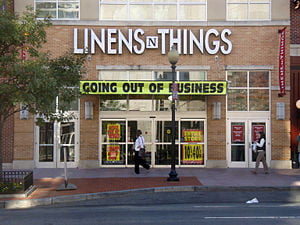 Understanding The Bankruptcy Trustee’s “Statement Of Intentions”–Image via Wikipedia
Understanding The Bankruptcy Trustee’s “Statement Of Intentions”–Image via WikipediaEvery debtor who files bankruptcy will be required to attend what is called the “meeting of creditors” or the 341 meeting. The meeting of creditors takes place about 30 days after the bankruptcy if filed and will include the debtor, the bankruptcy trustee, the debtor’s attorney and any creditors who want to attend. During this meeting the bankruptcy trustee will read off what is call the “state of intentions.” The statement of intentions is basically a statement devised to help the debtor understand what the trustee intends to do, specifically how the debtor’s property/assets will be handled in the bankruptcy case.
Here’s what the statement of intentions will tell the debtor:
- The bankruptcy trustee will mention which property is exempt. The trustee will get this information from the bankruptcy filing. As we said before, the trustee will not educate the debtor about their exemptions but will use the bankruptcy filing as his/her guide. That means that if you didn’t claim it as exempt in your filing, the bankruptcy trustee WILL NOT take upon himself to grant the property an exemption during this meeting.
- The bankruptcy trustee will mention which property is non-exempt but not worth the time or money to liquidate. This property will be called “property not worthy of administration.” You will get to keep this property during your bankruptcy.
- The bankruptcy trustee will mention which property is “encumbered” by loans or other liens against it. For example, your car might be considered encumbered because it has a loan attached to it. If the property is encumbered it may not be liquidated by the bankruptcy trustee, especially if the property secures a loan which far exceeds its value.